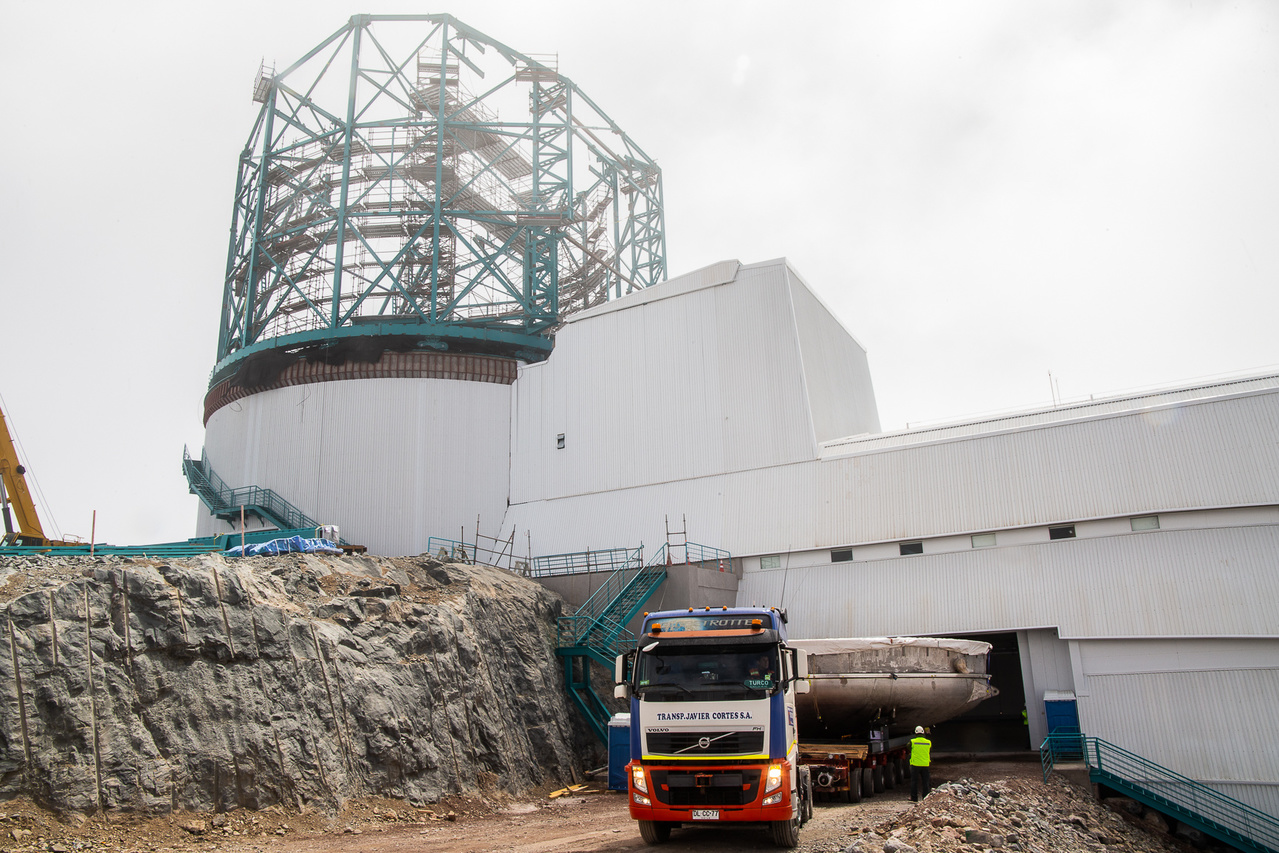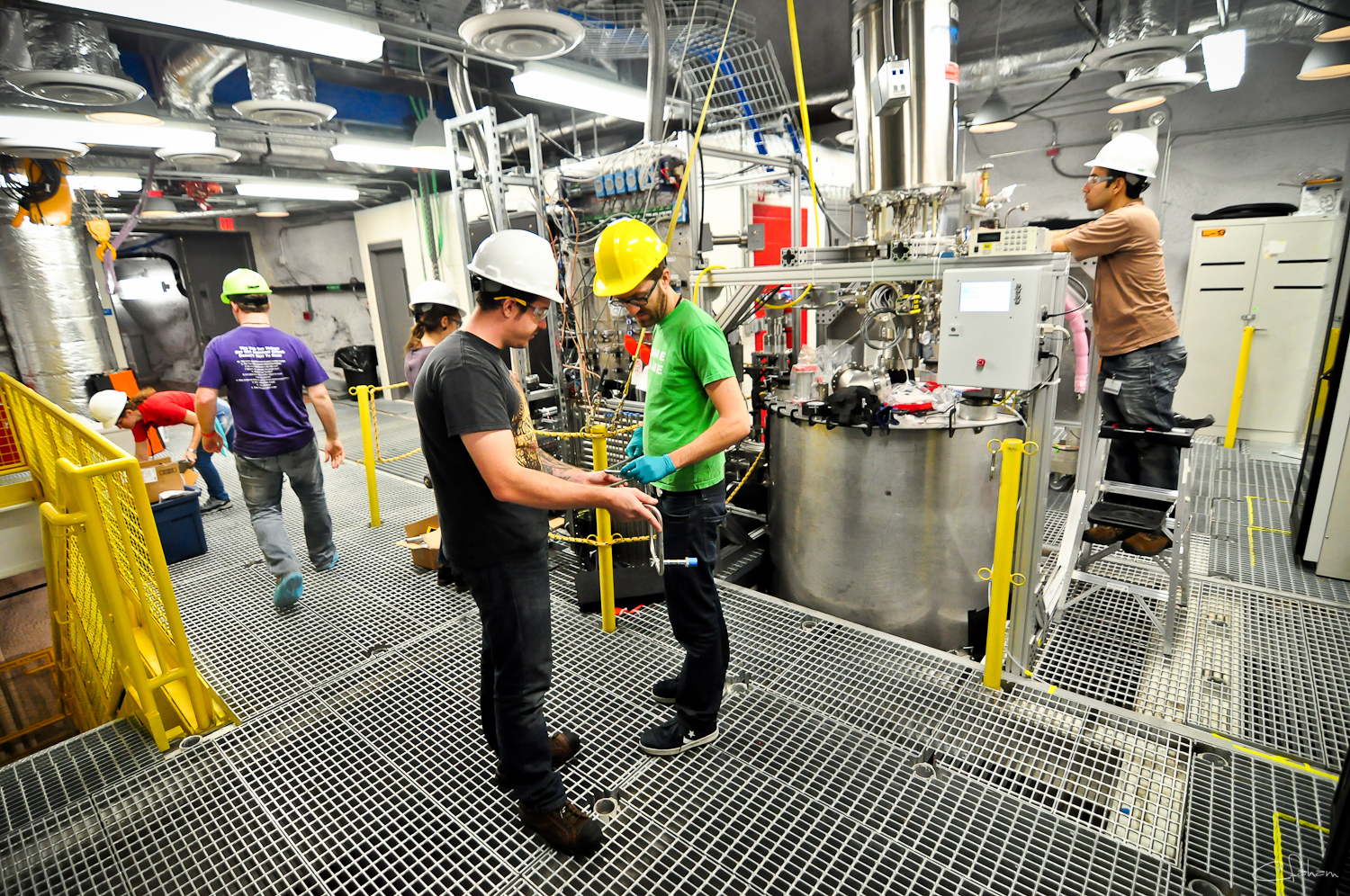4 Dark Matter Searches to Watch in 2019

2018 was a big year for dark matter.
As usual, astronomers didn't actually find any of the stuff, which is invisible to all our telescopes but appears to make up at least 80 percent of the universe by mass.
There were reports of a dark matter hurricane, but we can't actually see it. A galaxy was discovered that seemed not to have any dark matter, which oddly would have proved dark matter existed. But then it turned out that the galaxy may have dark matter after all — leaving the existence of dark matter in doubt for some physicists. Multiple experiments that were supposed to directly detect dark matter here on Earth turned up nothing.
So, where does that leave scientists hunting for dark matter as we head into 2019? Pretty optimistic, all things considered. The hunt for dark matter presses forward on all fronts.
From massive underground detectors to huge sky surveys, here are the four major steps in the hunt for dark matter to look forward to in 2019.
LIGO comes back online
The Laser Interferometer Gravitational-Wave Observatory (LIGO), the American detector that directly observed the first gravitational waves in 2015, will begin its third observation run in early 2019, collecting more data than ever before after a series of upgrades to its equipment.
So what's a gravitational-wave detector doing in an article about dark matter? It turns out that there are a lot of tantalizing possibilities for uncovering hints of dark matter using gravitational-wave data — though none of them have yet been realized.
Get the world’s most fascinating discoveries delivered straight to your inbox.
Researchers in 2018 proposed that if a "dark photon" with a very slight mass lurks somewhere in the universe, its signal might turn up in LIGO data, causing very specific irregularities in the signatures of gravitational waves.
“We show that both ground-based and future space-based gravitational wave detectors have the capability to make a [conclusive dark matter] discovery,” the researchers wrote.
With LIGO back online, turning up evidence for dark matter in gravitational-wave data is very much a live possibility.
Physicists will try to figure out whether MiniBooNE gave up the ghost of a neutrino
Throughout 2018, scientists chattered excitedly about intriguing results from an experiment at Fermilab National Accelerator Laboratory, called MiniBooNE, suggesting the presence of particles that shouldn't exist. The best explanation so far is that there's a fourth, as-yet-undiscovered neutrino out there, called the sterile neutrino, that interacts with the rest of the universe even less than its other neutrino cousins.
Some researchers believe that the sterile neutrino could be a candidate particle for dark matter, and as 2018 comes to a close, physicists are firming up their perspectives on this anomaly. Look for scientists thinking in new ways about that data and sterile neutrinos in general in 2019.
First light at the Large Synoptic Survey Telescope (LSST)
There's a telescope being built in Chile that will make detailed images of vast regions of the sky every 15 seconds, completing a full scan of the sky every three days. Over the course of 10 years, it will compare those images to one another again and again to track how the sky shifts and changes, providing the most in-depth-ever resource for understanding how dark matter pushes and pulls on the cosmos.
Scientists know, broadly, that dark matter shapes the way galaxies and their stars move and interact with one another. LSST's goal is to fill out that picture, offering an unprecedented level of detail on how the cosmos functions. That should offer astrophysicists a wealth of data on the nature of dark matter and the role it plays in the universe.
And in 2019, for the first time, researchers will open the 6,200-lb.(2,800 kilograms) eye of that telescope and take in light. Science operations begin in 2022.
The race to build a next-generation detector will heat up
Particle physicists have speculated for a long time that the first direct sign of dark matter might be a sparkle. Here's how it might work: As dark matter collides with inert substances in very dark rooms, those substances would emit faint specks of light. For decades, scientists have built detectors according to this principle, but so far, none have produced a conclusive result.
In 2019, scientists in China will be hard at work on the PandaX platform, which stares at xenon all day and night looking for a twinkle. Those scientists are rapidly upgrading the detector to accommodate a 4-ton (3.6 tonnes) xenon target, reporting that they expect to complete most of that work over the course of 2019 and 2020. The new detector will be called PandaX-xt.
Not to be outdone, researchers in South Dakota will be completing the most important phases of construction on LUX-ZEPLIN, which will observe a full 10 tons (9 tonnes) of xenon nearly a mile under the town of Lead, South Dakota. Like PandaX-xt, the project will likely not wrap up until 2020.
Italy will also move forward on upgrading its detector, appropriately named XENON, to an 8-ton (7.2 tonne) scale. The upgrade, called XENON-nt, should be wrapped up in 2019.
The next phase
It's always possible that some experiment somewhere will turn up incontrovertible, specific evidence that a particular kind of possible dark matter particle really exists. But in the short term, in almost every area, physicists are focused on using the lessons of the past to inform bigger, better dark matter hunts in the future. Will an incontrovertible dark matter finding turn up in 2019? That might be a bit optimistic. But the physicists chasing that goal are heading into the new year arming themselves to hunt with more precision and power than ever before.
Originally published on Live Science.







